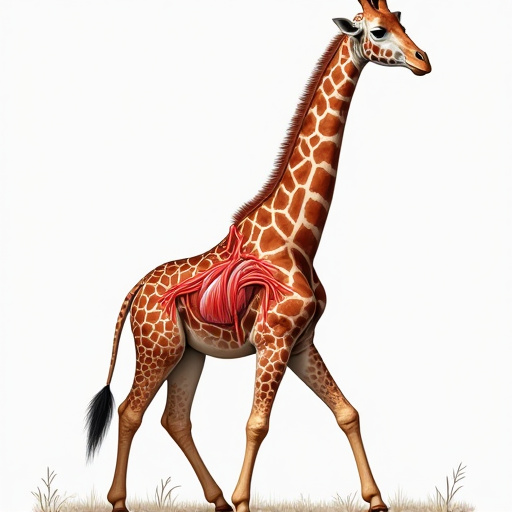
Why Do Giraffes Have Specialized Cardiovascular Systems?
Giraffes are among the most fascinating and unique creatures on Earth, known primarily for their extraordinary necks and towering heights. Standing tall at up to 18 feet, giraffes have evolved several adaptations to thrive in their environments. One of these crucial adaptations is their specialized cardiovascular system, which has evolved to support their unique physiology. This article delves into the reasons why giraffes have developed such specialized cardiovascular systems and how these adaptations function.
The Challenge of Height
Giraffes have the longest necks of any terrestrial animal, comprising roughly six feet of their overall height. This presents a significant challenge for blood circulation. To supply blood to the brain, it must be pumped from the heart, which is positioned much lower than the giraffe’s head. This requires a powerful cardiovascular system capable of overcoming the force of gravity.
High Blood Pressure
To meet this challenge, giraffes have developed a heart that is uniquely adapted to generate high blood pressure. The giraffe's heart weighs about 25 pounds and is capable of pumping blood at pressures two to three times higher than that of humans. This high blood pressure is necessary to propel blood up the long neck to the brain.
Thick Arterial Walls
The high blood pressure in giraffes necessitates strong and thick arterial walls that can withstand the increased force. The walls of the blood vessels, particularly the carotid arteries that run up the neck, are reinforced to prevent rupture or damage. This adaptation ensures that the blood can reach the brain efficiently without causing harm to the vascular system.
Mechanisms to Prevent Dizziness and Fainting
The rapid movement of the giraffe’s head, such as when bending down to drink or lifting quickly to eat from trees, could potentially cause dizziness or fainting due to sudden blood pressure changes. Giraffes have developed several mechanisms to prevent such issues.
Rete Mirabile
One of the key adaptations is the presence of a structure known as the rete mirabile. This is a complex network of small blood vessels located at the base of the brain. It acts as a pressure-regulating system, maintaining consistent blood flow to the brain when the giraffe lowers or raises its head. This system helps buffer the brain from sudden pressure changes, preventing dizziness or blackouts.
Venous Valves
Giraffes also possess a series of one-way valves in their jugular veins. These valves prevent blood from rushing back into the head when they lower their neck, which could otherwise cause a dangerous increase in pressure. By allowing blood to flow only in one direction, these valves help maintain stable circulation dynamics.
Efficient Oxygen Transport
Given the high metabolic demands and the sheer distance blood must travel, giraffes also have adaptations that enhance oxygen transport throughout their bodies.
Larger Red Blood Cells
Giraffes have larger red blood cells compared to many other mammals. These cells can carry more oxygen, which is crucial for maintaining adequate oxygen supply to all parts of their body, especially the brain, during high physical exertion.
Increased Capillary Density
The muscles and organs of giraffes are densely packed with capillaries, the tiny blood vessels where oxygen exchange occurs. This increased capillary density ensures efficient oxygen delivery to tissues, supporting their high-energy lifestyle.
Evolutionary Implications
The specialized cardiovascular system of giraffes is a remarkable example of evolutionary adaptation. These adaptations have enabled giraffes to occupy a unique ecological niche, feeding on foliage inaccessible to other herbivores. By leveraging their height, giraffes have access to a vast, untapped food resource, reducing competition and contributing to their evolutionary success.
Conclusion
Giraffes' specialized cardiovascular systems are a testament to the power of natural selection in shaping organisms to thrive in their environments. From their high blood pressure and thick arterial walls to their sophisticated pressure regulation systems, these adaptations are crucial for supporting their unique physiology and lifestyle. Understanding these mechanisms not only sheds light on the evolutionary history of giraffes but also highlights the intricacies of biological adaptation in the animal kingdom.
